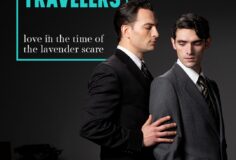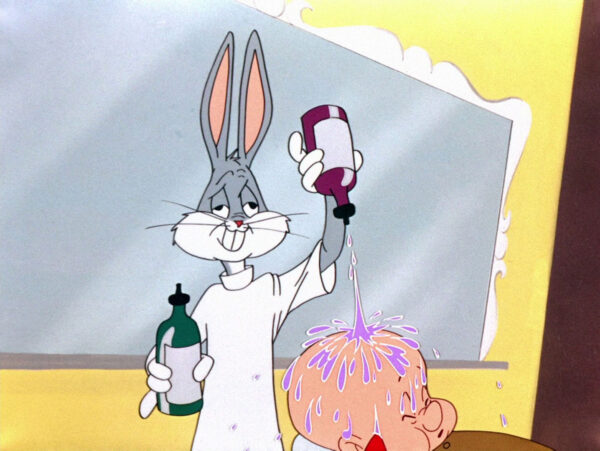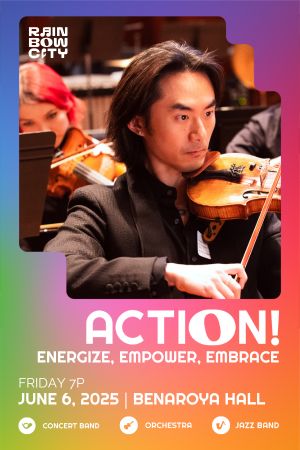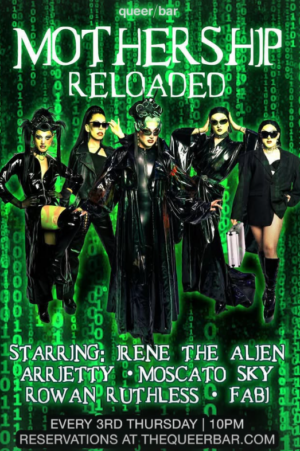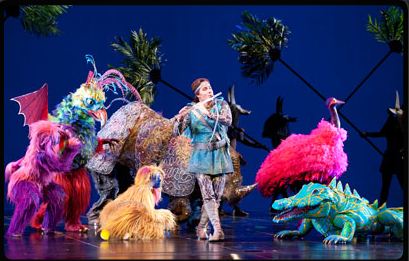
"The Magic Flute" charms the savage Zandra Rhodes costumed beasts. Photo: Seattle Opera/Rozarii Lynch
My only other viewing experience with Mozart’s The Magic Flute was the Met’s most recent production directed by acclaimed film and stage director Julie Taymor which was filmed for PBS a few years back. It was a beautiful and lush production with the usual Taymor touches of colorful and vibrant staging and design and lots and lots of puppets, with an A list cast of singers singing those roles. It was glorious and I loved it and now of course I have to compare ANY production of The Magic Flute with THAT production, which is not only difficult to live up to, (few opera companies can afford to spend the millions to stage an equivalent production) and because I saw an edited version of the complete work. That’s not really fair to other productions, but it can’t be helped; if you like something and you’ve seen an excellent version of the thing you love, then you’re always going to compare the subsequent versions to the original.
Seattle Opera’s current production of The Magic Flute is lovingly produced with some fine singers and beautiful (and highly publicized) costumes from Zandra Rhodes. It has obvious strong appeal and interest for both the opera buff and the newcomer. It’s an easily accessible work with gorgeous imagery and music from one of the most beloved composers of all time. It’s worth seeing. It’s also not nearly as compelling as the Met/Taymor production largely due to the dull and stagnant staging by Chris Alexander that too closely reveres traditional opera staging (The School of “Stand in One Place and Sing at the Audience”) and a frugally bare set design by Robert Dahlstrom and Robert Schaub that left everything to the imagination. This is a very “Germanic” production, more Wagnerian than Mozartian without the light and whimsy that’s inherent in Mozart’s music. I don’t critique the singing or musicianship of opera performances; I’m not qualified, but the sluggishness of the staging and design seemed to damper the joy of the music. I didn’t leave McCaw Hall last Sunday with much joy in my heart.
That being said, I did enjoy the performances of Leigh Melrose as the crowd pleasing comedic relief, Papageno, the Bird Catcher (of course, audiences ALWAYS love Papageno…who doesn’t love comic relief?) and Mari Moriya made a compelling Queen of the Night. The Queen’s big aria, “Der Hölle Rache” was an audience favorite in the otherwise slow moving second act and Ms Moriya received a rousing ovation for her performance. The romantic leads of “Flute”, the prince Tamino and the Queen’s daughter Pamina are a bit dull, like many romantic leads, but Jonathan Boyd and Hanan Alattar are gifted enough actors to give their heroic roles some depth, humor and meaning beyond romantic stereotypes. Ani Maldjian’s small role as Pappagena was typically well received and the Queen’s Three Ladies, Anya Matanovic, Marcy Stonikas and Lindsey Anderson all had strong singing skills as well as excellent comedic ability and timing.
Less memorable were Keith Miller’s dull and lifeless Sarastro, played without much nuance or interest, and Doug Jones as the menacing but comedic lackey, Monostatos. Mr. Jones did a fine job with the acting required of the role, and scored a number of laughs, but his singing voice was timid and at times inaudible. I don’t know if he was having an off day, but the vocal power was just not present in the performance.
My biggest gripes with “Flute” are with the staging and the design and the problems might go hand in hand. The bare and spartan set features many visual elements from Freemasonry rites, a thematic element in both the music and libretto of the opera and the use of pyramids and other symbols is initially quite effective, but the design elements are quite spartan and there is an over reliance on use of the stage curtain as a design element; half the scenes in “Flute” are played in front of it. And, the lack of staging elements and physical sets means that most of “Flute” is played on the stage floor with the result that there is little of visual interest with the placement of the actors. Everyone is lined up in dull clusters all on the same plane which results in boring and flat compositions. And, while I know Seattle Opera and McCaw Hall went to great expense to install a sophisticated and expensive digital display system to project images onto the stage as scene elements, the problem with their excessive and/or improperly implemented use results in some tired and cheesy effects. Late in Act II our hero and heroine, Tamino and Pamina must undergo a series of trials involving fire and water. The projected effects failed to create any dramatic interest or tension; the fire effect rather resembled one of those “Video Yule Logs” that you pop into your DVD player/hard drive at Christmas to turn your monitor into a warm and inviting “hearth”. It was very underwhelming.
I must be honest and admit I was disappointed with this production, but also have to admit I had exceedingly high expectations for it. Seattle Opera’s production of The Magic Flute isn’t on the level of the acclaimed and lavish Met production but they don’t claim to be in the same league as the Met and that’s fine. Their “Flute” has its charms and delights and it’s worth experiencing on its own merits. I just wish they’d maybe spent a bit less on hiring Zandra Rhodes and used some of that money on a better set and more interesting staging…and, dump that damn “Yule Log” effect.


